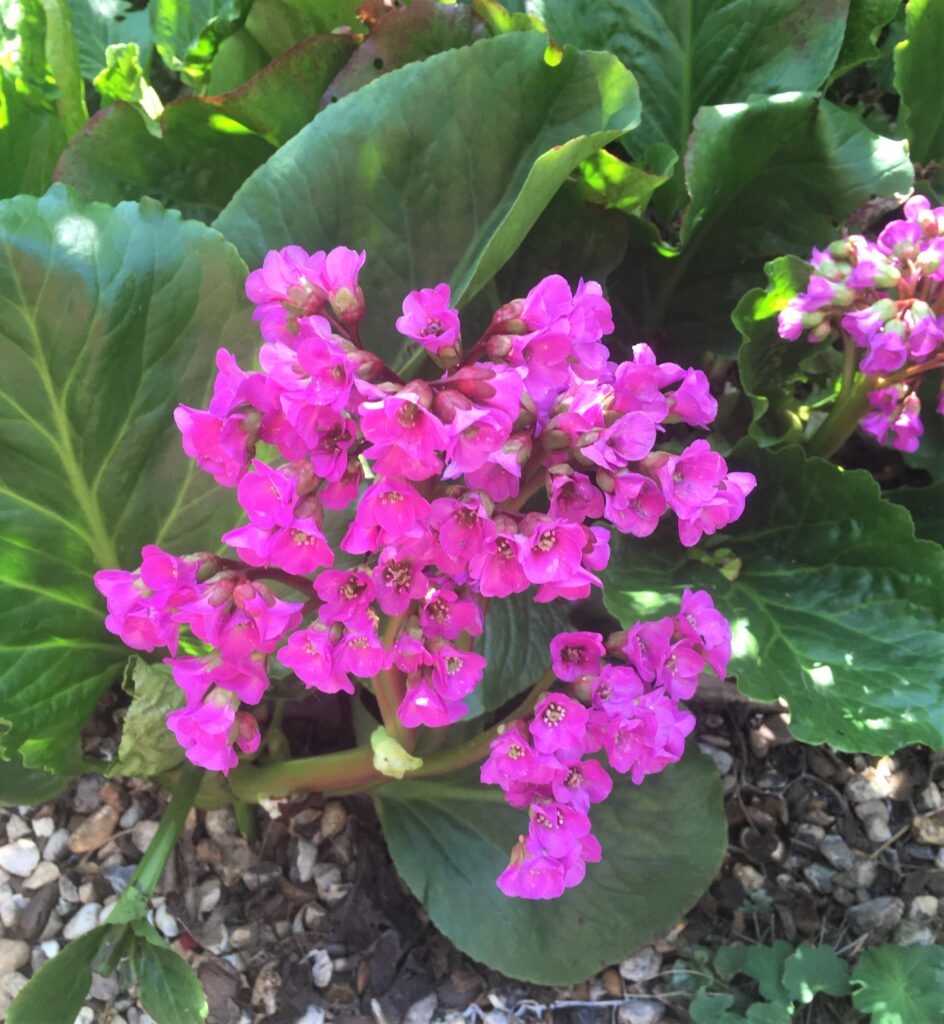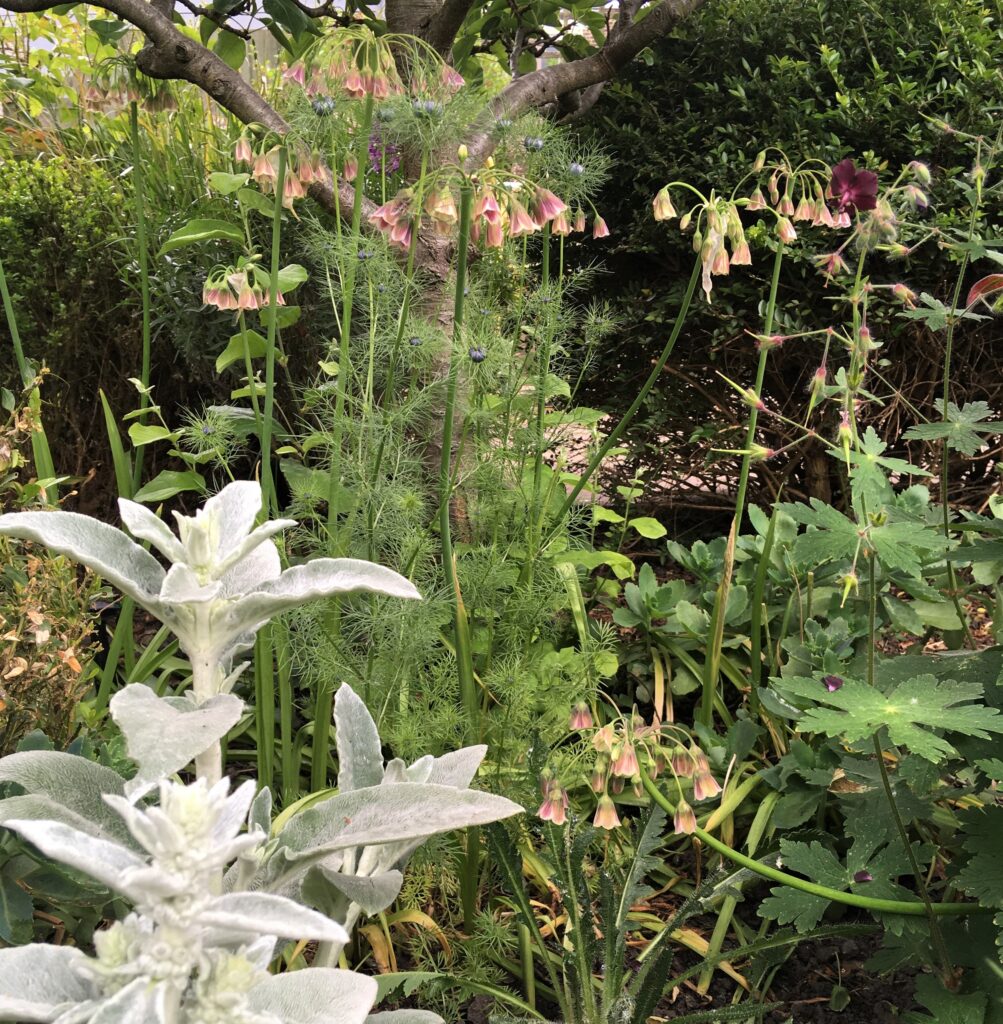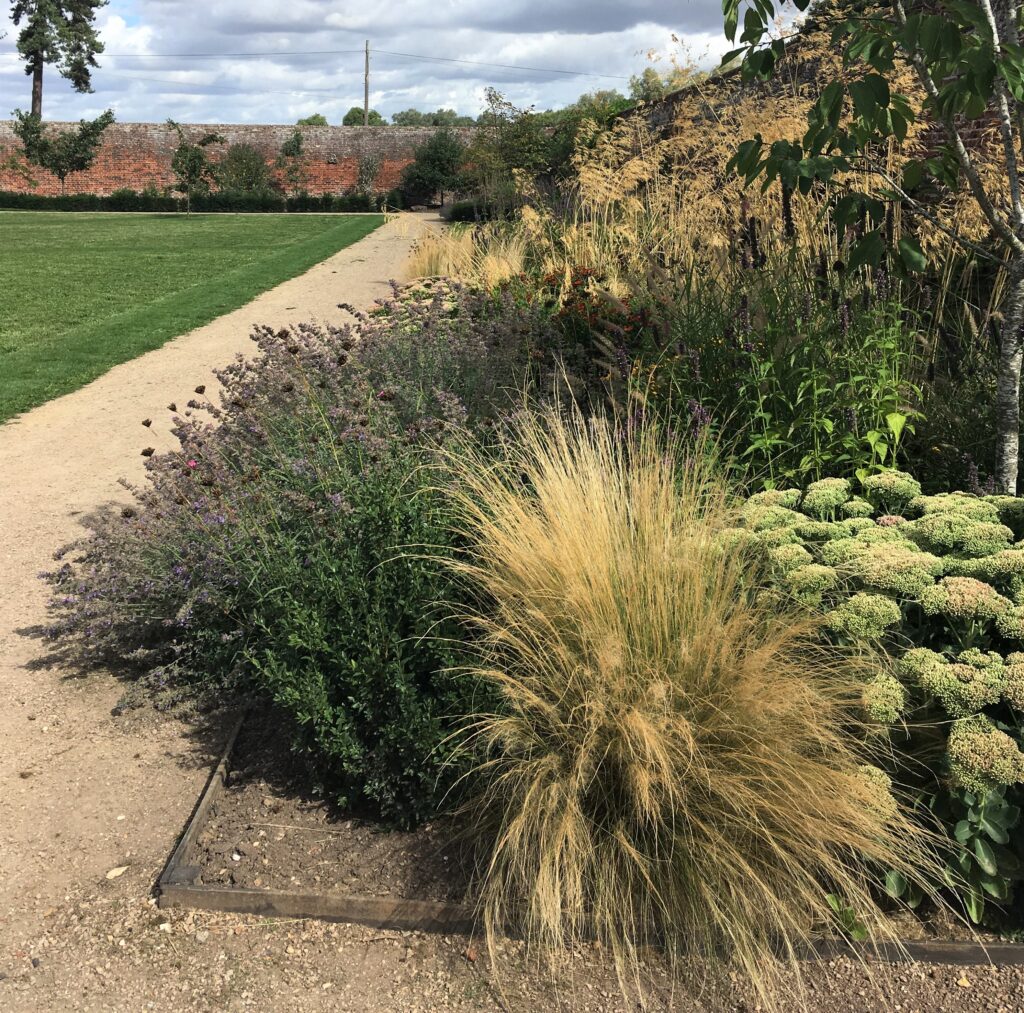It’s been the driest April on record in the UK and the weather continues to represent drought conditions, and my London garden is looking pretty parched. The water butt at the far end, which collects rainwater from the shed roof, is empty, so I’ve been lugging watering cans up to my raised veg beds every evening to rescue newly sown radish, lettuce and beetroot seedlings. My reliably tough pink hardy geranium is looking tatty and stressed. In short,
waterwise it feels like July, not May.
Irises cope well in dry soil and love to bake in the sun

New plants for old
As a result, I’m turning to drought-tolerant plants to fill an empty space in one of my borders. It’s a south-facing patch, roughly 2m square, between a fence and a pear tree that once housed a couple of beautiful box balls. In London the struggle against box moth caterpillar is vicious, and it’s a fight I abandoned this spring. Yes, I could have carried on picking off the hundreds of caterpillars by hand and spending money on expensive box moth traps, but frankly there are more entertaining things to be doing in the garden right now. Like a little light weeding with a gin & tonic in hand. Or building a climbing frame for my outdoor cucumber plants. Even setting out the willow supports for my sweet pea archway. Plus, I’m a firm believer in gardening with nature, not against it. If climate change is
here to stay (and the evidence certainly seems to suggest it is), then we need to adapt our gardening practices to survive.
Which plants to choose?
So what makes a plant drought tolerant? There are a few key adaptations that render leaves and stems better able to cope without water. The first is pale colouring (silver reflects light), sometimes accompanied by a covering of hairs (which trap moisture). Plants such as silver-felted lamb’s ears (stachys), cat mint (nepeta), sea hollies (eryngium), verbascums, santolina and lavender are well-equipped for drier conditions. Plants with slim, linear leaves also lose less water through evaporation – and grasses are two classic examples. And of course, those fat-foliaged succulents that store water in their stems and leaves are perfectly adapted to dry weather. This group includes sempervivums and echeverias (try growing these in a hot gravel garden) and – probably the most dependable in our climate – sedums like Rose Carpet.
Furry Stachys is well-equipped for drought
Grasses and sedums are great plants for dry conditions
Bearing this in mind I’ve chosen the fuzzy perennial Russian sage (perovskia), spiky sea holly (eryngium), pretty Mexican fleabane (Erigeron karvanskianus) and wafts of Stipa tennuissima to move into this newly created space in my garden.
Mexican fleabane will grow in the driest, most inhospitable of places
Brilliant Beth Chatto
For maintenance tips I’m flicking through my copy of Beth Chatto’s Gravel Garden. Beth was the queen of drought-tolerant gardening and her fabulous garden near Chelmsford in Essex is testament to the wonders that can be worked when gardening in tricky conditions. In fact, the gravel garden she created (built on top of an old car park) was designed never to be watered at all. Rather than fight with existing conditions, she decided to work with them and see what would survive on that three-quarter acre of poor, heavily compacted, gravelly soil. Without water. This brave experiment led her on a journey of discovery as she sorted out the toughest, most reliable plants for her dry,
windswept garden.
The tips Beth gives in her book are relevant even on the smallest of scales. After digging in plenty of compost to provide her plants with at least a superficial tranche of goodness, the new arrivals were put in place. She stresses the importance of hoeing off weeds in the first year after planting, before mulching heavily to preserve moisture.
To imitate the conditions of Beth’s Essex garden, I will dig some gravel, as well as compost, into my dry London clay before planting, dunking each plant pot into a bowl of water and leaving it until it’s properly soaked and every air bubble has risen from the pot. I’ll then wait until next spring to mulch with more gravel – although Beth used straw towards the back where aesthetics weren’t so important.
The area I’m planting is small, but if you’re tackling something more sizeable, Beth recommends making good use of mat-forming ground cover to help reduce soil moisture loss through evaporation, as well as keeping weeds at bay. Think low-growing creeping thymes, the tough, bright foliage of Euonymus fortunei, bee-bringing oreganos and – for shadier spots – handsome glossy-leaved bergenias.
A waxy coating on the leaves of bergenias stops them losing water

I’ll report back next year on my progress.
Francesca Clarke, Journalist and Garden Designer
P.S. Don’t forget to water, water everywhere in these drought conditions that we’re having




This is really helpful. I planted up a good sized dry garden on poor soil last year. Haven’t used gravel as a nuisance when re-positioning, but mulching. Erigeron a fantastic discovery. Fennel very happy as is lavender, shrubby ceratostigma, variegated irises good for foliage interest and verbena bonariensis. Stachys ‘silver carpet’ a lovely find. And I have several of your other recommendations, all doing well and glad to have them confirmed as sensible choices. Like Beth, I’m a great fan of the larger leafed bergenias (small ones I find go tatty looking).